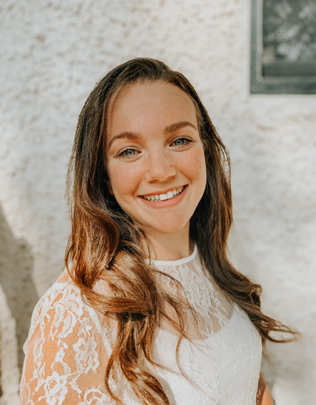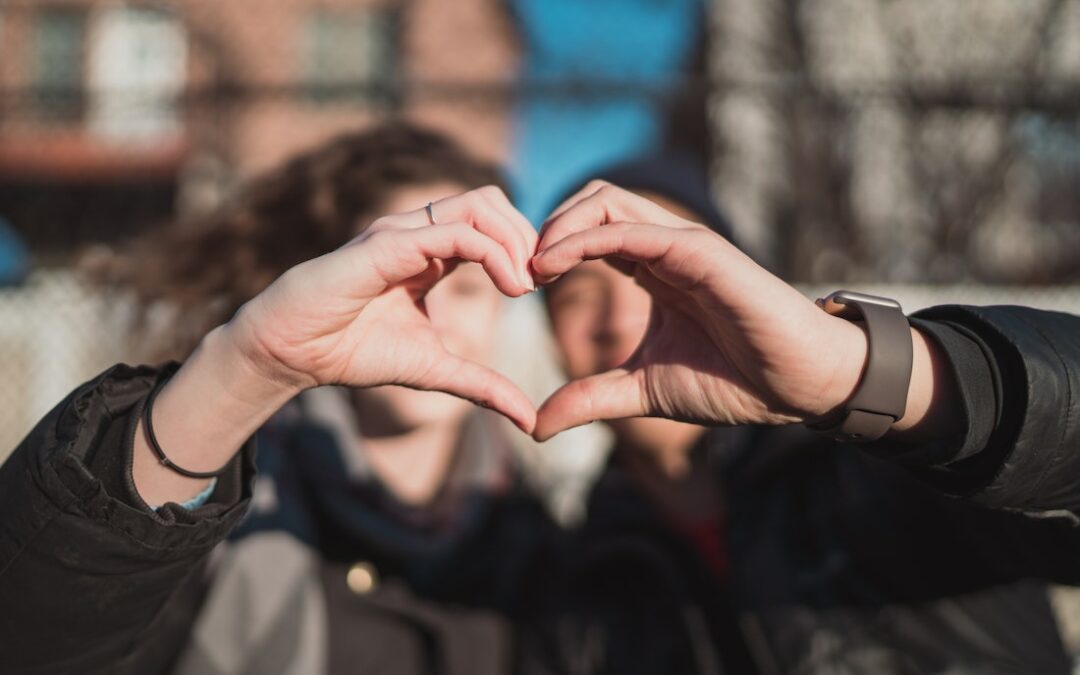Happy February and Valentine’s Day month! February is often labeled “love your body month,” so we thought this would be a great time to discuss what learning to love your body actually means. And what better way to do this than discussing 7 body positivity facts and myths.
So, let’s jump right in!
Also reminder to sign up for our newsletter! You’ll be emailed a FREE copy of our Body Image Workbook. Scroll down to the bottom of this page to sign up.
1) Myth: Body Positivity and Positive Body Image are the Same Thing
Let’s start out with some basic definitions so we can understand the difference between “body positivity” and “positive body image.”
Body positivity is a social justice movement that was originally started to amplify the voices of marginalized bodies (think the BIPOC community, disabled bodies, LGBTQ+, fat bodies). We’ll learn more about the history of the movement later! Body positivity is a movement to highlight the very important message that all bodies are good bodies. And that deserve respect, care, and belonging. That how a body looks doesn’t define that person and should never lead to discrimination against a person.
A positive body image is when a person has a positive view about themselves and their body. It’s when a person doesn’t just believe their body *looks* good. But they know their body is inherently good and worthy because they exist as a human being.
Why is this difference important? Body positivity is so much more than just ‘feeling good in your body.’ The purpose of the entire movement is to center and elevate the voices of marginalized people. This difference is particularly important when discussing “body positivity” and “body image” on public platforms, like Instagram or TikTok.
2) Myth: Once you Love Your Body, it’s Easy to Continue Loving Your Body
The common narrative about “positive body image” is once you learn to love your body, you’ll always love it. That once you feel secure about how your body looks, you’ll always feel good in your body. That there is a magical moment when it will all click.
But the reality is, body image is super complicated. Learning to accept and love your body is a life long and daily journey. And there isn’t a “tipping point,” where once you tip over you won’t ever have body image concerns again.
That doesn’t mean that it will take your whole life to learn how to love your body; and that body image will always be super negative. It means that body image will differ from moment to moment, which is absolutely normal.
And even when you have a positive body image and sense of self, there will be some days where it’s more difficult to remember that. Body image is fluid. When we understand this, we can learn to stop beating ourselves up for having a difficult body image day. Then we can instead learn that during those times it is best to be compassionate and gentle towards ourselves.
We say this to help you “lower expectations” about loving your body. To validate that it’s okay if there are still days where you struggle, even if you feel like you “should” be further along in your body image journey.
3) Myth: Body Positivity and Intentional Weight Loss Can Co-Exist
Short answer. They cannot.
Long answer. Body positivity is about body acceptance regardless of how one looks. Bodies are inherently good and do not need to change in order to be loved or accepted. While we 100% understand why someone would want to lose weight and hold so much compassion for that, we have to continue to share that weight loss and the required behaviors to do so are not healthy. This is where HAES (Health at Every Size) comes in. You can learn more about HAES from our other blog post: 5 HAES Myths.
Diet culture is insidious and fat phobia is so pervasive. Weight loss is not body positive. Although the media and others may tell you that you are loving your body by “treating it right”. By intentionally losing weight or encouraging someone to lose weight, one is saying “your body isn’t okay the way it is now.” Again, just as a reminder, weight loss does not equal “healthy”.
Of course, we believe it’s important to take care of oneself and feel good in one’s body. But, we challenge you to ask yourself, “what can I do to take care of myself without the end goal of weight loss?” “Would I do these things if it meant my body didn’t change?” If the answer is yes, keep doing them! If the answer is no, it could be worth it to explore why you are doing them and if they truly are helping you. It’s important to zoom out and look at the big picture and how diet culture messages may be shaping your view.
4) Myth: Body Positivity is a Recent Movement
While doing research for this blog post, we started Googling, as one usually does. We typed in “history of the body positive movement,” and the first article that came up said that the body positive movement started in 2012. Before writing this blog post, our knowledge of the movement was surface level and we still have a lot to learn. We knew enough to know this movement began decades ago and was started by fat, black, and queer individuals. Without the hard work from these amazing people, “body positivity” would not exist.
And so much of this gets lost in today’s social media version of body positivity because black and fat and queer individuals are often pushed out. Or, if they do post body positive messages, they are often deeply criticized and bullied. We think this shows that we still have a (very, very) long way to go as a culture when it comes to body acceptance.
We enjoyed this BBC article that talks about the origins of the movement.
5) Myth: The “Thin Ideal” Has Always Existed
The desire for the “ideal” body is one that has been around for centuries. For many years, even to this day, women’s fashion was based upon what was considered “ideal” at the time. In the 1600s being capable of having food on the table, and therefore money overall, was ideal. This resulted in larger bodied women being deemed attractive.
This changed during the mid 1800s when corsets came into the forefront of fashion. Women endured pain and many medical complications from corsets because it was a way to be socially acceptable, to find a husband, to be considered “beautiful”.
By the 1920s women began ditching their corsets and instead replacing them with rubber girdles. It can be said that the 1920s was the beginning of the *idea* of body positivity as women stepped away from the corset lifestyle. However, it must be noted that even though the emphasis on small waists was slowly dying off, the ideal body yet again changed for women and thus the desire for it began again as well.
This age was the first documented time when slenderness began to be desired. During all previous years clothes were created to fit the body; the 1920s began the new practice of making one’s body fit the clothes. This also was the first time that clothing began to be labeled with sizing. Some studies have also shown that during this time an eating disorder pandemic began, with what some researchers consider a period of the highest reported prevalence of disordered eating.
The approval of the birth control pill
In the 1960s the FDA approved the birth control pill, thus giving women more control over their bodies than ever before. The corsets were long gone, but they had simply been replaced by fad diets, exercise programs and media influence. Each decade following based on cultural events and the media a new “ideal body” for both women and men continues to emerge.
The bar is consistently being set higher and farther, and in effect diet culture has continued to negatively affect many lives.
Every generation believes that the new ideal body is the most healthy and most attractive; however as history has shown us repeatedly, the ideal is forever changing and forever unachievable due to that exact reason. The ideal of the 1800s, of the 1920s, of the 1960s, they were all, along with many others, just part of the constant change of society and diet culture. It begs to question why we as a society place so much emphasis on a body shape that will ultimately change at a moment’s notice?
6) Myth: Fat is a Bad Word
We wanted to take a moment to discuss the idea of “fat positivity.” Most of us probably have heard the word “fat” being used as an insult. Diet culture certainly associates fat/fatness with negativity. Many individuals in the body positive movement are reclaiming the word. Fat is a descriptor. Just as tall or brown-haired. Society has made the word fat into a negative and now individuals are reclaiming it. See if you can challenge the way you think about fat and fatness. Can you reframe this? And anytime you hear the word fat, remind yourself that fat is NOT bad.
A recent Instagram post by Whitney Way Thore of “My Big Fat Fabulous Life” on TLC comes to mind when discussing fatness. Whitney shared with her followers, who had posted numerous comments telling her to stop calling herself “fat”, why their good intentioned comments were actually harmful. By insisting that a person who has identified as “fat” no longer use that descriptor it reinforces the idea that fat is negative. And as Whitney says, “makes no damn sense because I am obviously fat,”.
How often have you heard a friend say, “Ugh I am so fat!” when they are describing feeling uncomfortable in their bodies? Usually, our reaction is to respond in a way that we think will comfort them, by saying something like, “no you’re not!” We totally understand why we do this! We don’t want our loved ones feeling badly about themselves. However, a response like this plays into fat phobia because it implies that being fat is bad. Other responses such as, “you’re not fat you’re beautiful” play into the notion that people who are fat cannot be both fat and beautiful, or possess other positive qualities. Next time a friend comes to you saying “Ugh I am so fat,” or any other similar comment, use the opportunity to increase awareness surrounding fat bias and the fat positivity movement.
7) Myth: Social Media and Body Positivity
Okay, this isn’t *actually* a myth but we think discussing how social media shapes “body positivity” is super important. On the one hand, it’s so AMAZING to see fat activists on social media. It’s super important to “diversify” your feed so you are seeing content from all sorts of people from all walks of life. (See our Resources Page for recommendations and read our blog on tips for cultivating a positive relationship with social media). That content is super important for all of us to see.
On the other hand, there are a lot of influencers on social media who already meet the “thin ideal” body type promoting “body positivity.” This creates a flawed message because it perpetuates what diet culture explicitly and implicitly says. That feeling good about your body is only possible if you look a certain way. And by making these bodies the center of body positivity, we push out the marginalized bodies that actually need representation and validation.
Don’t get us wrong.
It’s amazing to see people embracing their bodies and saying goodbye to diet culture. All of us *should* benefit from body positivity. However, the way the movement has been co-opted, only people who are close to the “ideal” are benefitting & feeling validated. We have to acknowledge that the marginalized bodies that are getting pushed out are also receiving hateful comments and hurtful messages shaming them for the most human of tasks (ie: eating, moving their bodies, hanging out, etc.); whereas those close to the “ideal” are getting praised for sharing their vulnerability with the social media world.
So not only are marginalized groups trying to promote acceptance of all bodies, they are also doing so all while being told over and over again by others that body positivity is not for them, it’s only for the “thin ideal”. A movement started by and for these marginalized groups has completely taken a 180 and is now fighting against them.
Lizzo did an interview with Glamour back in 2019 and we really like her words. She stated, “I don’t like it when people think it’s hard for me to see myself as beautiful…I don’t like it when people are shocked that I’m doing it,”. She even went further to explain that if we saw someone like Anne Hathaway in a bikini on a billboard we would not call her brave, we would just expect that she’s confident. What we do not expect, which is a clear result of fat phobia and diet culture, is that those in larger bodies or any one in a body outside of the “ideal” can be confident.
How can we change this one may ask? We get better at inclusivity.
Lizzo said best, “Let’s just make space for these women…Make space for me. Make space for this generation of artists who are really fearless in self-love. They’re out here. They want to be free. I think allowing that space to be made is really what’s going to shift the narrative in the future. Let’s stop talking about it and make more space for people who are about it,”. The time for action is now. Visit our resources page to discover some awesome pro-recovery people to follow 🙂
Get Support for a Positive Body Image
Courage to Nourish is a group of eating disorder specialized dietitians. We have in person locations in Alexandria, Virginia, Columbia, Maryland. and College Park, Maryland. We offer virtual services across the state of Virginia, Washington DC, Pennsylvania, and Colorado. We offer individual nutrition therapy. As well as support groups. We would love to guide you in building a better relationship with food.
Contact us for more information. And to schedule a discovery call. Also, sign up for our client or clinician newsletter!
Take one of our eating disorder quizzes:
- Binge Eating Disorder Quiz
- Anorexia Quiz
- Bulimia Quiz
- ARFID Quiz
- Body Image Quiz
- Disordered Eating Quiz
- Chronic Dieting Quiz
- PCOS Quiz
- Orthorexia Quiz
- Compulsive Exercise Quiz
- RED-S Quiz

Helping my clients cultivate meaningful connections and interests outside of their eating disorder is a true passion of mine. I like to think my clients and I are on a team to navigate recovery. I love working with high school and college students as well as athletes seeking to have a better relationship with exercise. I am a proud anti-diet dietitian and work with my clients through a Health At Every Size © and intuitive eating framework.

My goal is to support individuals in feeling safe with the experiences of eating and movement. As a former employee in both the fashion and fitness industries, I witnessed first hand how there is an incredible amount of misinformation regarding nutrition and body image in society today. I believe Intuitive Eating and Health at Every Size © are invaluable tools for recovery. I am overjoyed to be a part of Courage to Nourish and I look forward to supporting my clients as they develop fulfilling relationships with food and their bodies, so they can focus their time and energy on the extraordinary things life has to offer.

